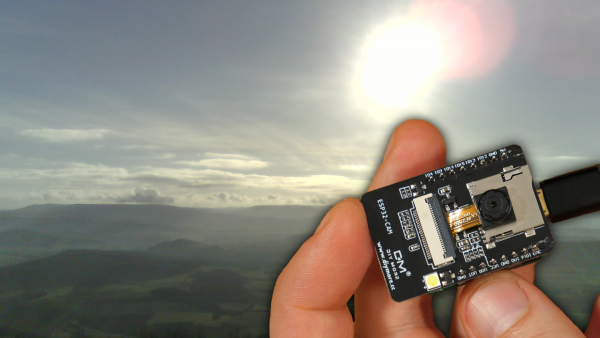Intro
This simple LED matrix display is easy to build and is able to display a shared screen just using the browser. No special software or operating system is needed on the sharing PC. This way it’s easy to display animations, images, feeds or symbols on this matrix. The 3D printable case is made from one piece. The lowest layer is used as a back projection screen.
Parts
There are only a few parts needed for this project (affiliate links):
- Raspberry PI Pico W ~$7
- 16×16 LED Matrix ~$13
- Barrel Jack or alternative with screw terminals
- 5V DC Power Supply at least 2A (I used the linked one. It’s noisy but handy. you can use any old one)
Software
Download the required software:
- Thonny is a good free software to develop MicroPython
- MicroPython prebuild firmware (new updates but not tested)
- main.py and index.html (and 3d models) from my github repository
Install Thonny first.
Press the button on the PicoW and connect the USB cable to your PC. A new drive should show up. Copy the firmware (UF2 file) to this drive. It takes a moment and the Pico should reconnect. In Thonny you can select the Pico W in the bottom right corner as target. Tip: checking View -> Files makes it easy to manage the files on the PC and on the Pico.
Now you open the main.py file, change the wifi credentials in the first lines of the code and save as selecting the Pico as target. You can also run the the code directly from the editor by pressing the play button from the tool bar. Saving stores it on the device and will start automatically when it’s powered up again.
The shell should now show the output of the Pico. When it connected successfully the IP will be displayed. This is assigned by your router and will most probably not change anymore. Write this IP down as we need it to connect to it from the browser.
Opening the index.html will show a simple screen share app. Paste the IP of the Pico in the edit field and start sharing. Opening the index.html locally is necessary due to security restrictions (grabbing the screen should not be done by any sus web page). Nothing is send to the web. It doesn’t even need an internet connection to begin with. The IP is stored in the browser. Opening index.html from the same file location should have the IP kept.
Nice test but without LEDs nothing to see yet.
Connections
If you bought a Pico W with pin headers you can use simple jumper wires and secure them with some tape. Otherwise, you can use the male connector (either extra included or de-soldered from the output side) to solder to the pads of the Pico W:
- GND (white or black) wire to a GND pad of the Pico
- Data wire (in the center usually green) to GP22
- 5V wire (red) to VBUS
You can use a strong 2Amp USB power supply now to power the matrix but it’s not specified for that. The best way is to use the barrel jack PSU. It needs to be 5V and 2A DC. If you are using an old power supply make sure it’s not AC. This will destroy everything.
The barrel jack should be connected to the red/black wire in the center of the matrix. Center pin positive (this can be tested with the continuity tester of a multimeter). This will supply the LEDs and the microcontroller trough the connector. Try to avoid connecting the USB while the power supply is connected. Different voltage levels might conflict and cause damage. Also when connecting the Pico W to the PC don’t share bright scenes. That draws more current than the USB can supply. That will shut down your USB host or even break it.
Safest way is to disconnecting the barrel jack. Connecting the Pico to the PC. Making your changes etc. Disconnecting from the PC and connecting to the PSU.
3D Print
If you don’t have a printer you should visit a local maker space. The people are helpful and you can use a 3D printer there (maybe for a small fee). There are also online print services but these are expensive.
Use a printer with a 0.4mm nozzle. The stl files from the github repository can be directly opened in the slicer. You can disable supports and print in 0.3mm layer height. Wall count should be at least 2 to avoid time consuming infill in the outer wall. The first layer needs to be set to 0.3mm too! There are settings that might override this. I tried 2 layers and the beck projection didn’t work anymore.
In my opinion a dark gray filament is the best option. 20mm version prints faster but 30mm might have a better diffusion.
Once the print is done the matrix should fit nicely in. Check for the notches for the small components to get the right orientation. The barrel jack can be secured with a nut.
Power up and Have Fun!
Links
- Rasberry Blog post for WiFi controlled LED. (Beginner explenations)
